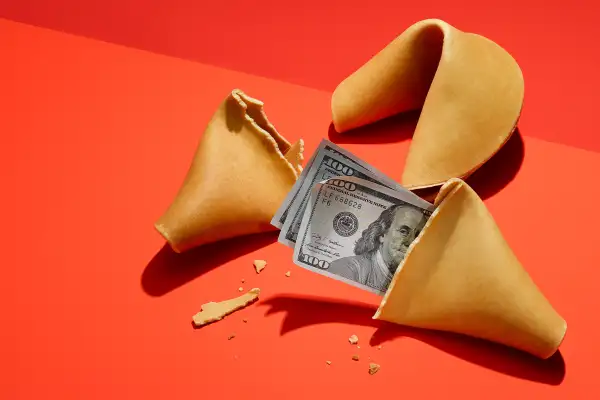5 Ways to Prosper in 2015
Money is not a client of any investment adviser featured on this page. The information provided on this page is for educational purposes only and is not intended as investment advice. Money does not offer advisory services.

The pace of U.S. growth may be more minivan than Ferrari, but the economy is nonetheless motoring along. Gross domestic product is forecast by the International Monetary Fund to grow 3.1% in 2015. That will put the U.S. ahead of most of its peers, which are facing serious headwinds: Europe may slip into its third recession since the financial crisis, and Japan’s stimulus effort hasn’t revved up its economic engines. China, meanwhile, is trying to maneuver slowing growth into a soft landing.
To make sure growth here doesn’t stall out, the Fed will likely wait till late 2015 to raise rates, and any increase is expected to be small and gradual. That’s still good news, though. “The U.S. economy is in a position to withstand the beginning of interest rates rising—something our trade partners can’t do yet,” says Chun Wang, senior analyst at the Leuthold Group.
Our relative health should continue to lure global investors to U.S. stocks and bonds. That in turn should support the almighty buck. After rising about 5% against a basket of currencies of our major trade partners this year, the dollar could gain another 5% in 2015, Wang says.
A stronger dollar means cheaper overseas travel and cheaper imports—and the latter should keep inflation from picking up momentum as well.
Here'a five-step action plan for profiting off U.S. versus them.
Move to the middle on bonds. While bonds that mature in less than three years are usually considered the safest, “short-term high-grade bonds could be the most vulnerable in 2015 if the Fed starts raising rates as expected,” says Lisa Black, interim chief investment officer for the TIAA General Account. Because the recovery here has been so much stronger than in the rest of the world, global investors will continue to favor 10-year Treasuries, putting upward pressure on prices and keeping a lid on yields. Thus short-term rates, over which the Fed has more influence, are likely to see a much bigger rise relative to their current level.
If you’ve kept a big chunk of bond money in short-term mutual or exchange-traded funds recently—either to hedge inflation risk or to get more yield on cash—get back to an intermediate strategy in 2015. Money 50 fund Dodge & Cox Income yields 2.5%, vs. less than 0.8% for Vanguard’s Short-Term Bond Fund.
Bet on cyclical stocks. LPL chief investment strategist Burt White—who forecasts a mid- to high-single-digit return for the U.S. stock market in 2015—expects to see above-average performance in sectors that do better when consumers and businesses have more money to spend. In particular, he says, industrial and technology stocks should benefit if the strong economy motivates corporations to invest in systems upgrades. He recommends Industrial Select SPDR ETF , as well as PowerShares QQQ ETF , which tracks the tech-heavy Nasdaq 100.
Eke more out of your cash. In 2014 the average money-market account paid a mere 0.08%, and that yield isn’t likely to grow in any meaningful way in 2015. But don’t just give up on your savings.
Move cash you need accessible—like emergency funds—to an online bank such as MySavingsDirect, which yielded 1.05% recently, suggests Ken Tumin of DepositAccounts.com. If you have $25,000-plus to deposit, you can earn 1.25% at UFB Direct. Use the rest of your savings to build a CD ladder. Divide the sum into five buckets and deposit equal amounts in one- to five-year CDs. As each comes due, roll it into a five-year to benefit from rising rates. Based on current yields, you’ll earn an average 1.6%.
Head south. The dollar now buys nearly 8% more euros and 13% more yen than a year ago. That will make travel to Europe and Japan less expensive, but it still won’t be cheap. For great value—and some stunning photos besides—consider Costa Rica, says Anne Banas, editor of SmarterTravel.com.
The dollar is up 7% against the colon in the past year, making the country more of a bargain than it already was. Located in the rainforests of Arenal Volcano National Park on the Pacific Coast, the five-star Tabacon Grand Spa Thermal Resort—one of TripAdvisor’s 2014 winners for luxury—starts at $260 a night, for example. And flights from major U.S. cities can be found for $400.
Expect the unexpected. When stocks were spooked in September by Ebola reaching U.S. shores and increased U.S. airstrikes against ISIS, the S&P 500 fell 7% but European shares sunk 13%. U.S. stocks continued to lead when investors returned to focusing on economic growth.
While it’s impossible to predict what will rattle the markets in 2015, what you can do is take stock of your fortitude. If you persevered and profited from this recent snap back, plan for another in 2015 and bet on U.S. outperformance.
On the other hand, if you panicked and sold stocks, dial back your equity exposure by, say, five percentage points if it will keep you hanging on to your allocation in rough seas. Redirect that money to U.S. Treasuries. Jack Ablin, chief investment officer for BMO Private Bank, says that these should benefit from a crisis: “It’s remarkable how Treasuries and the U.S. dollar are the newly appointed safe-haven vehicles for the world."